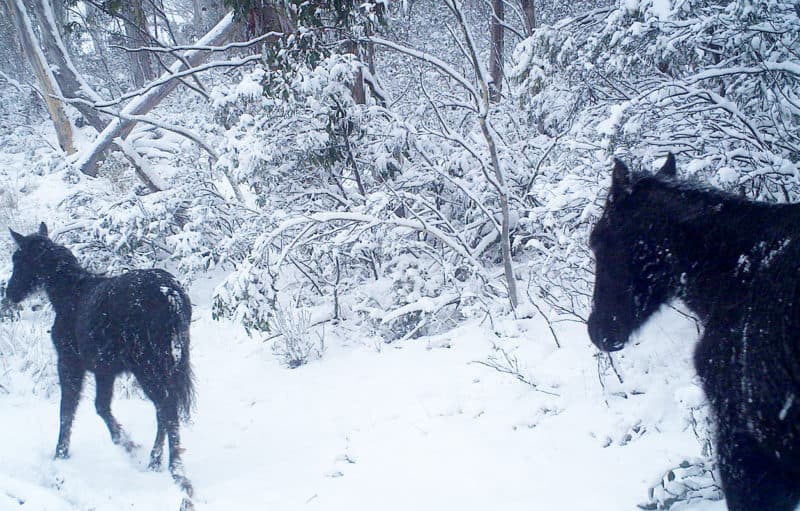PARK WATCH March 2017 |
Our executive director Matt Ruchel raises the alarm on plans to log Victoria’s western forests.
Concern and anger has been sparked among conservationists by a decision that appears to escalate logging in state forest and some forest parks in western Victoria (west of the Hume Highway).
Just days ahead of the 2014 state election caretaker period the then agriculture minister, Peter Walsh, handed control of logging west of the Hume Highway to VicForests, Victoria’s forest-logging agency.
Previously, the Coalition had undertaken a review aiming to increase resource security and opportunities for industry growth in the region. VicForests had previously only ever operated major forestry areas in eastern Victoria (east of the Hume Highway).
There had been little movement between 2014 and 2016 amid assurances the areas flagged for logging by the Victorian Coalition would not proceed. But in October 2016, VicForests commenced an expression of interest process seeking new operators or bidders for native forest in western Victoria, including around the Otways, Portland, Pyrenees Ranges, Mt Lonarch state forests and other areas south of Ballarat.
Habitat rich
Western Victoria is home to state forest rich in habitat but comparatively small and in largely cleared landscapes. It is a region were commercial native forestry had largely been phased out, with a number of operators being paid out or transitioned when the Otway National Park was proclaimed in the early 1990s.
The Coalition review was deeply flawed and failed to consider any ecological implications or impacts on threated species. It also ignored biodiversity protection efforts.
We understand that the VicForests’ expression of interest process has generated three or four new business interests in the Portland area alone, and the process has now moved to the next phase of producing a new Timber Utilisation Plan (TUP) for 2017-2019/20.
The plan identifies 43,000ha of land for various types of logging. The logging options range from thinning to speciality timber selection, commercial firewood and more than 7000ha of hazardous tree removal.
VicForests say they are not planning clear-felling but it was not been ruled out in the draft plan. Likewise, the TUP includes eight coupes in the Wellsford Forest, near Bendigo, including high conservation and controversial ‘Big Tree’ coupes identified by local conservationists.
The Andrews Government appears to be endorsing the approach of VicForests and the previous coalition government. Victoria’s agriculture minister, Jaala Pulford, has confirmed to us that ‘…there is no change in forest policy for western Victoria …’.
United
We have joined with local conservation groups, including the Portland Field Naturalists’ Club and the Bendigo and District Environment Council, to slam the proposed return of native forest logging to western Victoria.
It has been well documented for decades that the history of land use in Victoria has left a legacy of fragmented habitat and a high proportion of animal and plant species now threatened or extinct, especially west of the Hume Highway.
Native vegetation in Victoria’s fragmented landscapes supports the majority of the state’s biodiversity.
Around 40 per cent of our native land vertebrate species (mammals, birds, amphibians, reptiles) are virtually restricted to fragmented landscapes.
A further 45 per cent rely on fragmented landscapes across a major part of their distribution in Victoria.
Preventing habitat loss and improving the condition of native vegetation is, by many orders of magnitude, more cost-effective than revegetation, and has significantly better conservation outcomes.
It seems a profoundly flawed approach to provide millions of dollars and thousands of volunteer hours for revegetation of our most cleared landscapes in western Victoria, while opening up logging in the last remaining native forest remnants on public land.
To add insult to injury, the targeting of native forest is in a region containing a massive hardwood and softwood plantation forestry estate accompanied by the biggest export woodchip facility in the world.
The area is also covered by the Western Regional Forest Agreement. This agreement essentially turns off national environmental laws in the region and, like the other Victorian Regional Forests Agreements in the east of the state, is now being reviewed as a package and will be completed in early 2018.
VicForests is obligated to maximise its profits and should not be involved in forestry in western Victoria, which will never be ecologically or economically sustainable.
Conservationists are calling for the:
- Cancellation of the Western Regional Forest Agreement.
- Reversal or dropping of the VicForests responsibility for western Victoria.
- Cancellation of the current Timber Utilisation Plan process.
- Completion of a full and detailed ecological assessment of forested public land in the region.
Get more stories from Park Watch
This story first appeared in the March 2017 edition of our magazine Park Watch.
